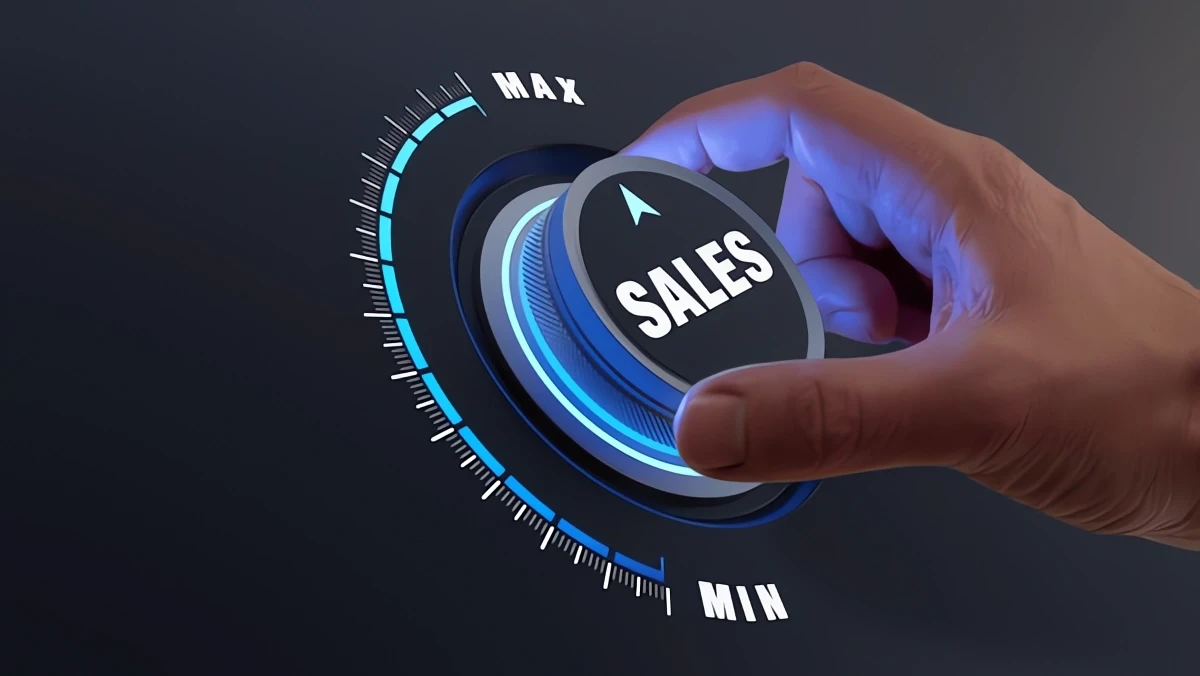In 2025, web design is not just about aesthetics—it’s about creating a seamless, engaging, and personalized user experience that reflects the latest technological advancements and trends. As businesses adapt to the evolving digital landscape, they must prioritize websites that not only look stunning but also offer high performance, accessibility, and a responsive interface across all devices. This guide will walk you through the key web design trends and best practices for 2025, offering insights on how to stay ahead of the curve.
Key Trends in Web Design for 2025
1. Mobile-First Design
Mobile-first design is no longer optional. With over half of global web traffic coming from mobile devices, prioritizing a mobile-first approach ensures that your website delivers a smooth and engaging experience for users, regardless of their device. In 2025, businesses will need to focus on mobile-friendly layouts, ensuring that pages load quickly and that content is easy to navigate on smaller screens.
The shift towards mobile-first design also requires adopting responsive design principles. This means your website should automatically adjust its layout and design elements to fit any screen size—from smartphones to desktops. This trend is driven by the increasing reliance on mobile devices for shopping, browsing, and social media interaction.
Pro Tip: Test your website across multiple devices and resolutions to ensure that your mobile-first design provides a flawless user experience. Keep navigation simple, avoid clutter, and make calls-to-action (CTAs) prominent.
2. Voice Search Optimization
Voice search is becoming an integral part of web design as more users turn to voice assistants like Siri, Alexa, and Google Assistant for quick answers. By 2025, optimizing your website for voice search will be critical to staying relevant in search engine rankings.
Voice search queries tend to be longer and more conversational than text searches, so focusing on natural language processing (NLP) and structuring your content to answer specific questions will improve your website’s visibility. For instance, if a user asks, “What are the best restaurants in New York?” a well-optimized website should directly address this query with content that sounds natural and informative.
Pro Tip: Integrate FAQ pages and optimize content around question-based keywords to capture voice search traffic. This not only improves SEO but also enhances the user experience for voice-assisted searches.
3. Bold Typography and Kinetic Type
Typography will play a more dynamic role in web design in 2025. Expect to see bold, kinetic typography that engages visitors with visually striking text that moves or animates based on user interaction. Typography is no longer just about readability; it’s about creating an immersive experience that reflects your brand’s identity.
Kinetic type—which refers to text that changes as the user scrolls or interacts with the page—adds an element of surprise and engagement to the user experience. For example, a bold headline that morphs or moves in sync with user actions can grab attention and make a lasting impression.
Pro Tip: Use kinetic typography sparingly, ensuring that it doesn’t detract from the overall usability of your site. Typography should enhance the user journey, not overwhelm it.
Essential Web Design Features for 2025
1. Microinteractions
Microinteractions—small, subtle animations that provide feedback or enhance user engagement—will be a vital feature of web design in 2025. These interactions help create a smooth user experience by offering immediate feedback on actions like clicking a button or completing a form.
Examples of microinteractions include hover effects, button animations, or a progress bar that fills up as the user scrolls down a page. While these elements may seem small, they can significantly improve the overall user experience by making interactions more intuitive and visually appealing.
Pro Tip: Integrate microinteractions in key user touchpoints, such as navigation menus, forms, and buttons, to guide users and improve engagement.
2. Gamification
Gamification, or the integration of game-like elements into web design, will continue to rise in popularity in 2025. This trend involves using rewards, challenges, and interactive elements to engage users and encourage them to take specific actions, such as signing up for a newsletter or completing a purchase.
Gamification adds a layer of interactivity that makes the website experience more enjoyable, leading to higher user engagement and retention. For example, a progress bar that tracks the steps of an online quiz can encourage users to complete the task by making it feel like a fun challenge.
Pro Tip: Use gamification to create loyalty programs or reward users for completing certain actions on your website. This can be an effective way to collect user data, improve conversions, and increase overall engagement.
3. Dark Mode and Customizable Themes
As more users seek ways to reduce eye strain, dark mode has become a popular feature. In 2025, offering a dark mode option will be a must for websites that aim to improve user satisfaction. Dark mode uses darker color schemes, which are easier on the eyes, especially in low-light environments.
Allowing users to toggle between dark mode and light mode gives them more control over their browsing experience. Customizable themes also provide a more personalized experience, which can increase user satisfaction and retention.
Pro Tip: When designing for dark mode, ensure that text remains readable and that your color palette retains contrast to maintain visual clarity.
Innovations in Web Development
1. Parallax Scrolling and Interactive Design
Parallax scrolling—where background images move slower than foreground content—adds depth and creates a more immersive user experience. This technique, combined with other interactive elements like hover effects and animations, is expected to be a staple of modern web design in 2025.
Parallax scrolling can be used to tell a visual story or highlight important content as the user navigates the page. This dynamic interaction not only makes your website more visually appealing but also enhances the overall user experience by guiding them through the content in an engaging way.
Pro Tip: Avoid overloading your website with too many parallax effects, as they can slow down page load times. Use them strategically to draw attention to key areas of your site.
2. AI-Generated Content and Design
Artificial Intelligence (AI) is transforming the way websites are designed and maintained. In 2025, AI-generated content and design will become more commonplace, allowing businesses to quickly create custom layouts, images, and even entire websites based on user preferences and behaviors.
AI tools can help with tasks like optimizing layouts for conversions, generating logos, and even writing content tailored to user interests. This technology enables faster design iterations and allows businesses to offer personalized experiences without manual intervention.
Pro Tip: While AI can streamline many design tasks, human oversight is still essential to ensure that the design aligns with your brand’s voice and vision.
Color and Visual Trends for 2025
1. Muted and Gradient Color Palettes
In 2025, muted color palettes and gradients will continue to dominate web design. These colors provide a soft and elegant look that is easy on the eyes and conducive to longer browsing sessions. Gradient backgrounds, in particular, are popular because they create depth and interest without overwhelming the user.
Gradients can range from subtle transitions between shades of the same color to bold, multi-color shifts. This design choice offers versatility, allowing you to experiment with various tones while maintaining a cohesive look.
Pro Tip: Stick to colors that align with your brand identity, and use gradients to add a modern touch without detracting from your content’s readability.
2. 3D Visuals and Immersive Experiences
As virtual reality (VR) and augmented reality (AR) technologies become more prevalent, 3D visuals will play a larger role in web design. In 2025, expect to see websites that offer fully immersive experiences through interactive 3D elements and animations.
3D design can be especially impactful in industries like eCommerce, where users can interact with products in a virtual environment before making a purchase. These visual elements create a more engaging experience, making websites feel more interactive and less static.
Pro Tip: Incorporate 3D visuals strategically, focusing on areas where user interaction will have the greatest impact, such as product showcases or virtual tours.
Best Practices for Web Design in 2025
1. Prioritize Speed and Performance
With users expecting websites to load in under three seconds, performance will be a top priority in 2025. Slow websites lead to higher bounce rates and lost conversions, so optimizing your site’s performance is crucial.
To improve load times, consider using content delivery networks (CDNs), compressing images, and minimizing the use of heavy scripts and plugins. Website performance also directly impacts your SEO rankings, making it even more important to prioritize speed.
Pro Tip: Use tools like Google Page Speed Insights to monitor your website’s performance and make necessary adjustments to ensure fast load times.
2. Accessibility and Inclusivity
Designing websites that are accessible to all users, including those with disabilities, will be a key focus in 2025. By adhering to WCAG 2.1 standards, businesses can ensure that their websites are inclusive and easy to navigate for users with visual, auditory, or motor impairments.
Accessibility isn’t just about legal compliance—it’s about creating an inclusive experience that welcomes all users. Features like screen reader compatibility, keyboard navigation, and alt text for images can make a significant difference in how users interact with your website.
Pro Tip: Regularly test your website for accessibility using tools like WAVE or Accessibility Checker to identify areas that need improvement.
Security and Privacy
1. Security and Privacy
In an era where data breaches are increasingly common, security and privacy have become essential components of web design. In 2025, businesses must ensure that their websites are built with robust security features to protect user data and build trust with their audience. Implementing HTTPS encryption, two-factor authentication, and strong data privacy policies will help ensure that users feel safe interacting with your site.
As data privacy regulations continue to evolve, businesses must also stay compliant with global standards like the General Data Protection Regulation (GDPR) and the California Consumer Privacy Act (CCPA). These regulations require transparency about how user data is collected, stored, and used, and they mandate giving users control over their personal information.
Pro Tip: Regularly audit your website for potential security vulnerabilities and update your privacy policies to reflect any changes in data protection laws. Display trust badges and certificates to reassure users that their information is safe on your site.
Conclusion
Web design in 2025 is all about creating personalized, engaging, and high-performance experiences that cater to the evolving expectations of users. From mobile-first design and voice search optimization to bold typography and AI-driven content creation, the trends of 2025 will push the boundaries of what’s possible in the digital space.
By staying ahead of these trends and incorporating the best practices for accessibility, performance, and security, businesses can ensure that their websites not only look great but also offer seamless functionality and user satisfaction. As we move into 2025, the key to successful web design will be adaptability—being able to embrace new technologies and trends while keeping the user experience at the forefront of every design decision.
For businesses looking to stay competitive, investing in modern web design is not just a trend but a necessity. By aligning your web design with the trends and innovations of 2025, you’ll be well-positioned to deliver exceptional digital experiences that drive engagement, conversions, and long-term success.






